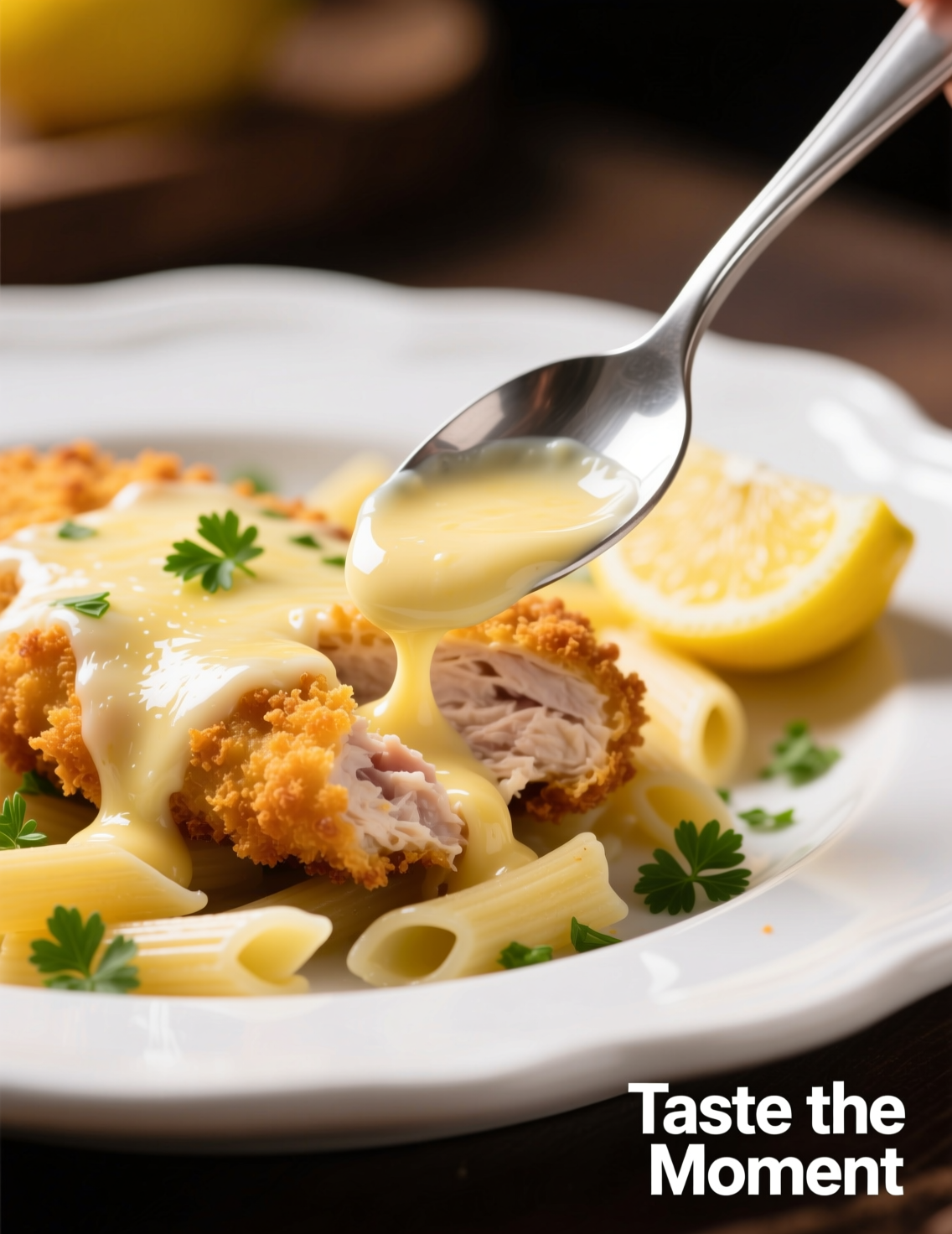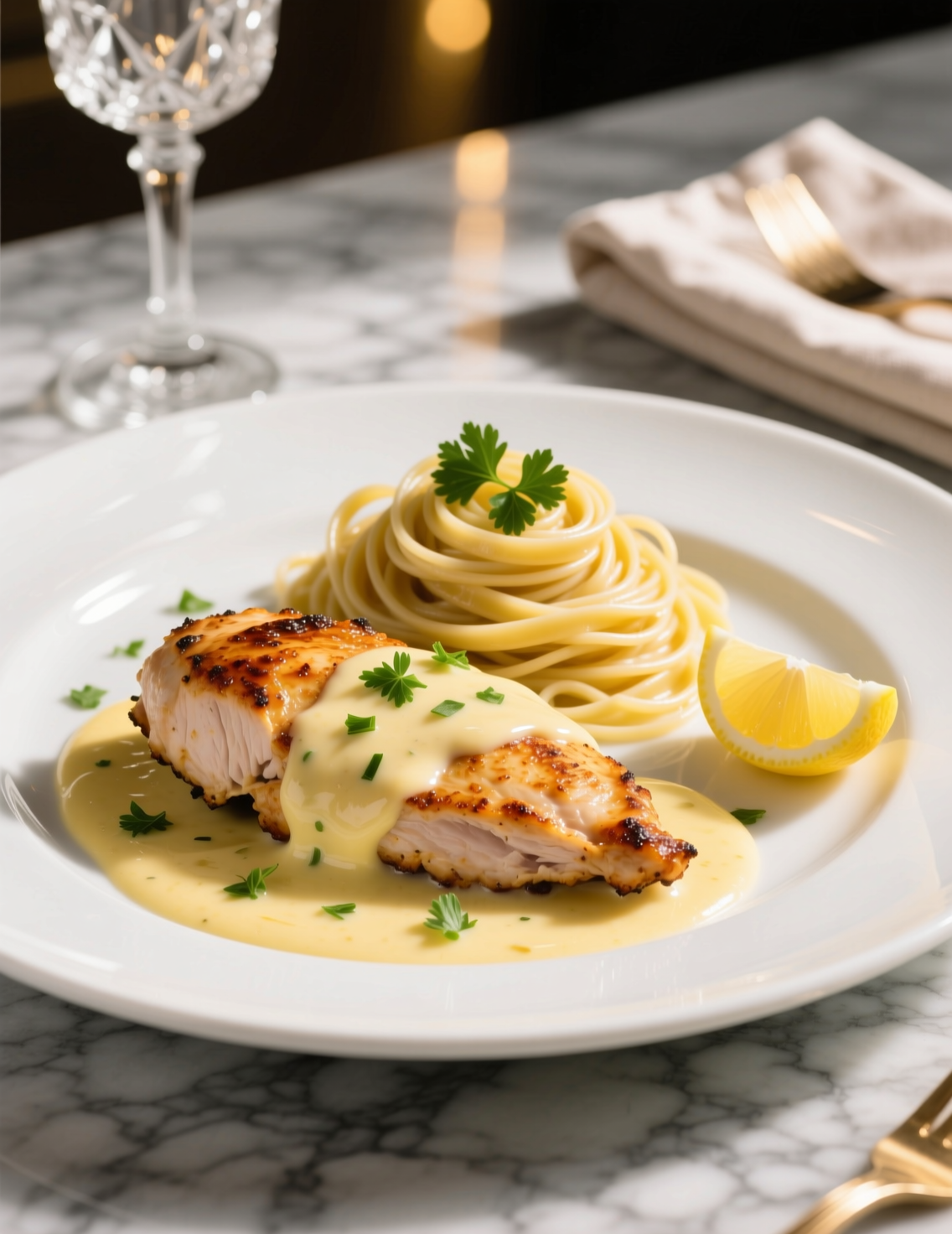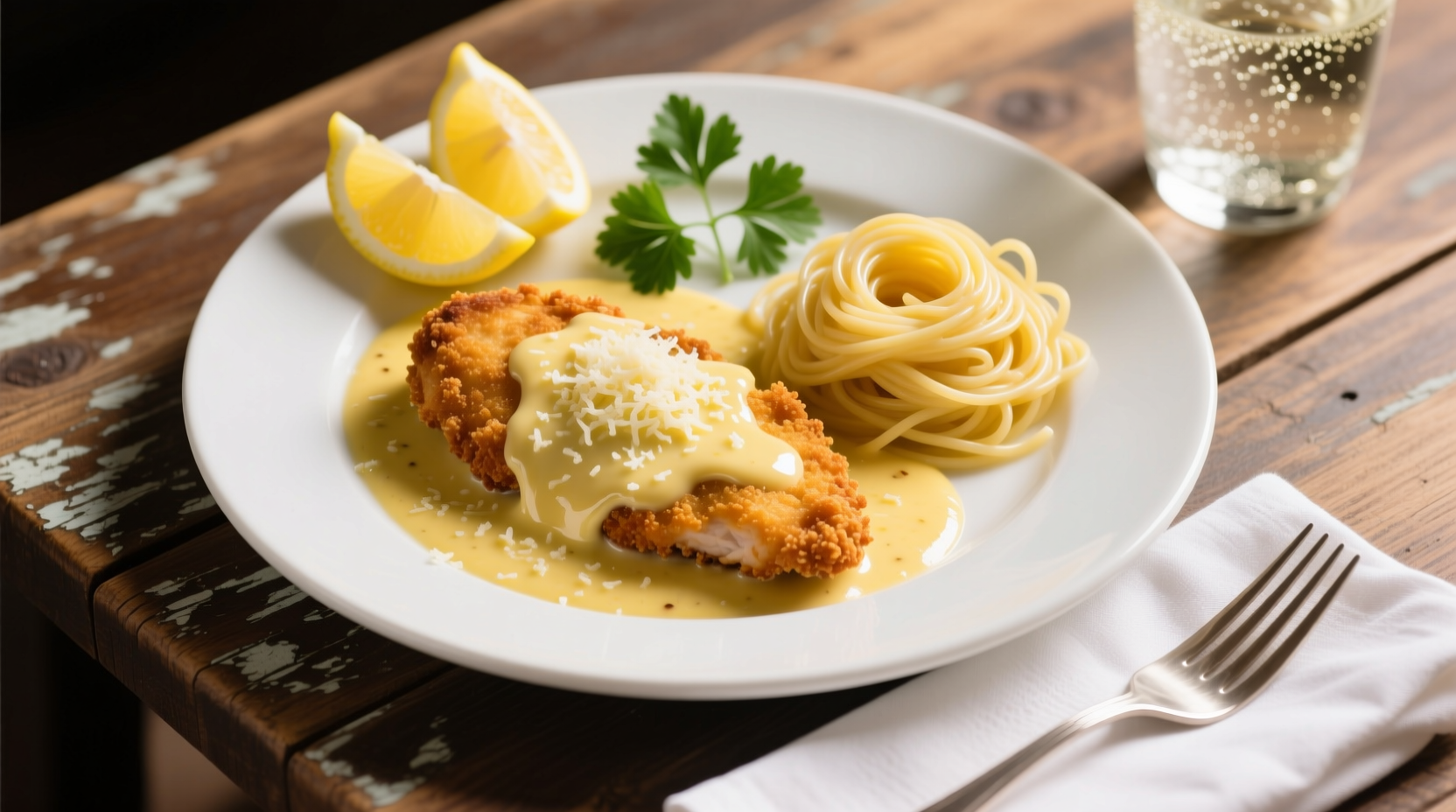If there’s one dish that sneaks into the hearts of both casual cooks and seasoned chefs, it’s Lemon Chicken Romano. The recipe is deceptively simple but hides a remarkable balance of crisp textures, tangy lemon brightness, and that nutty Romano cheese magic. It’s quick, it’s easy, but let’s be honest—only when you know exactly what to do. Today, I’ll break it down not like a home blogger, but like a chef who knows where shortcuts are useful and where they’re deadly to flavor.
Why Lemon Chicken Romano Deserves Your Attention
This isn’t just another “chicken with cheese and lemon” kind of recipe. There’s a delicate science here. The acidic lemon juice tenderizes the chicken fibers, while the Romano cheese (sharper and saltier than Parmesan) adds savory depth that locks onto your tongue. You can’t just toss things into a pan and hope for restaurant-grade results. Technique matters. Timing matters. And yes, your oil temperature matters more than you think.
Romano is also not as forgiving as Parmesan. Leave it sitting in too much fat, and it clumps up rather than coating beautifully. Professionals already know this, but even the pros sometimes forget in a rush. The right balance keeps the dish crisp instead of greasy.
Ingredients That Actually Matter
When people say “use what you have,” I sometimes wince. Not every substitution works. For 4 servings of proper Lemon Chicken Romano, you’ll want:
- 4 boneless, skinless chicken breasts, pounded thin (around 1/2 inch)
- 2 large eggs
- 1/2 cup all-purpose flour
- 1 cup grated Pecorino Romano cheese (freshly grated, not pre-packaged powder)
- 1/2 cup breadcrumbs (fine, preferably homemade from day-old bread)
- 2 tablespoons fresh parsley, chopped
- Zest and juice of 2 lemons (organic if you can, since zest carries pesticides otherwise)
- 3 tablespoons olive oil (light, not extra-virgin, for frying)
- 2 tablespoons unsalted butter
- Kosher salt and freshly ground black pepper to taste
Notice what’s missing? Garlic. Heavy cream. Extra nonsense. The recipe shines because it’s stripped back, almost austere in its confidence.
Prepping the Chicken the Smart Way
Pounding the chicken thin isn’t just to make it cook faster. It ensures even heat penetration, prevents leathery spots, and gives that golden crust a wide, flat surface to cling to. I’ve seen kitchens skip this step to save a minute, and you end up with dry centers or raw streaks. Pound it gently but firmly. Don’t bash it like a mad drummer—meat tears too easily.
Season the chicken before dredging. Salt early, but lightly, because Romano is naturally salty. This isn’t just about flavor—it’s also about science. Salt helps proteins unwind slightly, allowing them to retain more moisture during frying. Small step, massive difference.

Building Layers of Coating
Here’s where too many recipes cut corners. You’ll need three shallow bowls. Flour in the first, beaten eggs in the second, Romano and breadcrumbs mixed in the third. Dip chicken into flour, shake off excess, then egg, then that Romano-breadcrumb mix.
Why this order? Because flour helps the egg cling. Egg helps the cheese-breadcrumb layer bind. Skip flour, and everything slides off mid-fry like a poorly stuck Post-it. Professionals know: structure of coating determines whether the final bite crunches or soggily collapses.
And yes, always press the Romano mixture gently into the chicken with your fingers. Don’t just sprinkle. A chef’s hand matters more than a spoon here.
Frying Without Regret
Now the tricky part. Heat olive oil with a touch of butter in a large skillet over medium-high heat. You want 350°F (175°C) ideally, but if you’re too proud to use a thermometer, toss a breadcrumb in—if it sizzles instantly but doesn’t blacken, you’re good.
Lay chicken pieces away from you, never towards (unless you enjoy hot oil tattoos). Don’t overcrowd the pan. Steam kills crispness faster than anything else. Two at a time is safer than four, unless you’re running a commercial range.
Each side takes about 3–4 minutes. Don’t fiddle, don’t poke, don’t flip early. Golden brown means patience. A premature flip equals a broken crust, and broken crusts equal chef shame.
Finishing With Lemon Brilliance
Once fried, rest chicken on a wire rack, not paper towels. Towels steam the underside, wrecking the crunch you just worked for. This is one of those details separating pros from casual cooks.
While chicken rests, make a quick sauce. Pour out excess oil, leaving behind browned bits. Add fresh lemon juice, zest, and a splash of butter to the skillet. Swirl, don’t whisk, so you don’t emulsify too much. Drizzle over the chicken right before serving. Not earlier. Sauce sitting on crisp crust too long equals soggy tragedy.
What Professionals Get Wrong
Even chefs mess up this dish when they overcomplicate it. Cream sauces, garlic floods, Parmesan swaps, or even piling pasta underneath—it drowns what should be light and bright. Lemon Chicken Romano isn’t a heavy comfort plate. It’s elegance through restraint.
I’ve tasted versions in big-name restaurants where the cheese crust was rubbery because they used pre-grated Romano. That powdery stuff is designed for convenience, not performance. If you’re cooking at any serious level, grating cheese fresh isn’t optional.
Why Romano, Not Parmesan
Let’s be clear. Pecorino Romano is sheep’s milk cheese. Sharper, saltier, tangier. Parmesan is cow’s milk, more mellow, slightly sweet. Substituting Parmesan might give you “Chicken Parmesan Lite,” but it won’t deliver the distinct kick that Romano lends.
There’s also a texture difference. Romano melts differently. It integrates with breadcrumbs instead of turning gummy. That crispy-salty bite is what sets this apart.
Serving Suggestions That Actually Work
You don’t drown this dish in pasta. Keep sides light. A simple arugula salad with olive oil and shaved fennel works beautifully. Roasted asparagus with lemon zest mirrors the brightness. Or polenta, smooth and subtle, balancing the crunch of the chicken.
Wine pairing? A crisp Pinot Grigio or Sauvignon Blanc matches the lemony acidity. Chardonnay, if unoaked, works too. Avoid reds unless you want the lemon to fight the tannins.

Nutrition and Health Insights
Each serving comes around 450–500 calories, depending on oil absorption. Romano is high in sodium, so balance your salt early on. The dish actually offers a decent protein punch—around 40 grams per serving.
Research shows lemon juice not only enhances flavor but aids iron absorption from proteins (Journal of Food Science, 2017). That means you’re not just eating tasty food—you’re making nutrients more bioavailable.
A Bit of Culinary History
While Lemon Chicken Romano isn’t a centuries-old Italian classic, it borrows heavily from Italian-American cooking traditions of the mid-20th century. The concept of Romano cheese in crusted chicken likely emerged in U.S. kitchens trying to blend southern Italian flavors with American pan-frying techniques. It’s less “nonna’s recipe” and more “Italian-American chef special.”
But that doesn’t reduce its authenticity—it represents a culinary bridge. Professionals respect dishes that evolve with migration, adaptation, and cultural blending. This is one of those.
Common Misconceptions
One myth is that you need a deep fryer. Totally unnecessary. Shallow pan-frying gives more control and less oil waste. Another misconception: fresh herbs must be cooked into the crust. Wrong. Fresh parsley burns fast and turns bitter. Add it after frying for freshness, not before.
People also think chicken thighs improve the dish. They don’t. Breasts, when pounded thin, cook evenly and deliver the clean canvas that Romano and lemon deserve.
Trends and Variations
Some chefs now experiment with air-frying Lemon Chicken Romano. While it reduces oil, it also reduces that deep golden crunch. It works for home health-conscious cooks, but professionals usually stay loyal to skillet frying.
Others add chili flakes or Calabrian peppers for a kick. That’s fine, but don’t let spice overpower lemon’s subtlety. If you add heat, keep it a whisper, not a shout.
Step-by-Step Professional Method Recap
- Pound chicken breasts to 1/2 inch. Season lightly with salt and pepper.
- Prepare dredging stations: flour, beaten eggs, Romano-breadcrumb mix.
- Coat chicken in flour, egg, then cheese-breadcrumbs. Press firmly.
- Heat olive oil and butter in skillet to 350°F. Fry chicken 3–4 minutes per side.
- Rest chicken on wire rack.
- Make quick sauce with lemon juice, zest, butter in skillet. Drizzle over chicken.
- Garnish with fresh parsley. Serve immediately.
That’s it. No shortcuts that ruin results, no unnecessary frills.
Conclusion
Quick and Easy Lemon Chicken Romano isn’t just a “weeknight dinner.” It’s proof that restraint and precision can yield something extraordinary. The secret lies in technique—pounding evenly, coating carefully, frying at the right temp, and finishing with lemon at the last moment.
For professionals, it’s a reminder that great cooking often comes from doing less, but doing it with exactness. For home cooks, it’s an invitation to step into that professional mindset, even if just for one meal.
Make this dish the right way, and you’ll not only taste the Romano’s sharp bite against the lemon’s brightness—you’ll feel why chefs respect simplicity when it’s executed flawlessly.
FAQs
What makes Lemon Chicken Romano different from Chicken Parmesan?
Lemon Chicken Romano uses sharp Romano cheese and lemon for a lighter, tangier flavor compared to Parmesan’s mellow richness.
Can I substitute Parmesan for Romano in this recipe?
You can, but it won’t deliver the same salty tang and crisp texture that Romano brings.
Why do I need to pound the chicken breasts thin?
It ensures even cooking, prevents dryness, and gives the crust a flat surface to cling to.
Should I use fresh or packaged Romano cheese?
Always fresh—pre-packaged Romano turns clumpy and lacks the sharp bite.
Can this dish be air-fried instead of pan-fried?
Yes, but you’ll lose some of the deep golden crispness from skillet frying.
Why rest chicken on a wire rack instead of paper towels?
A rack prevents steam buildup and keeps the crust crunchy.
Can I make Lemon Chicken Romano ahead of time?
It’s best fresh, but you can reheat in the oven at 350°F to maintain crispness.
What sides go best with this dish?
Light salads, roasted vegetables, or creamy polenta complement it beautifully.
Is this recipe gluten-free?
Not as written, but you can use gluten-free flour and breadcrumbs.
How long does it take to cook Lemon Chicken Romano?
Around 25–30 minutes from prep to plate, if you’re organized.

Mariana is a passionate home cook who creates delicious, easy-to-follow recipes for busy people. From energizing breakfasts to satisfying dinners and indulgent desserts, her dishes are designed to fuel both your body and hustle.
When she’s not in the kitchen, she’s exploring new flavors and dreaming up her next recipe to share with the Foodie Hustle community.

